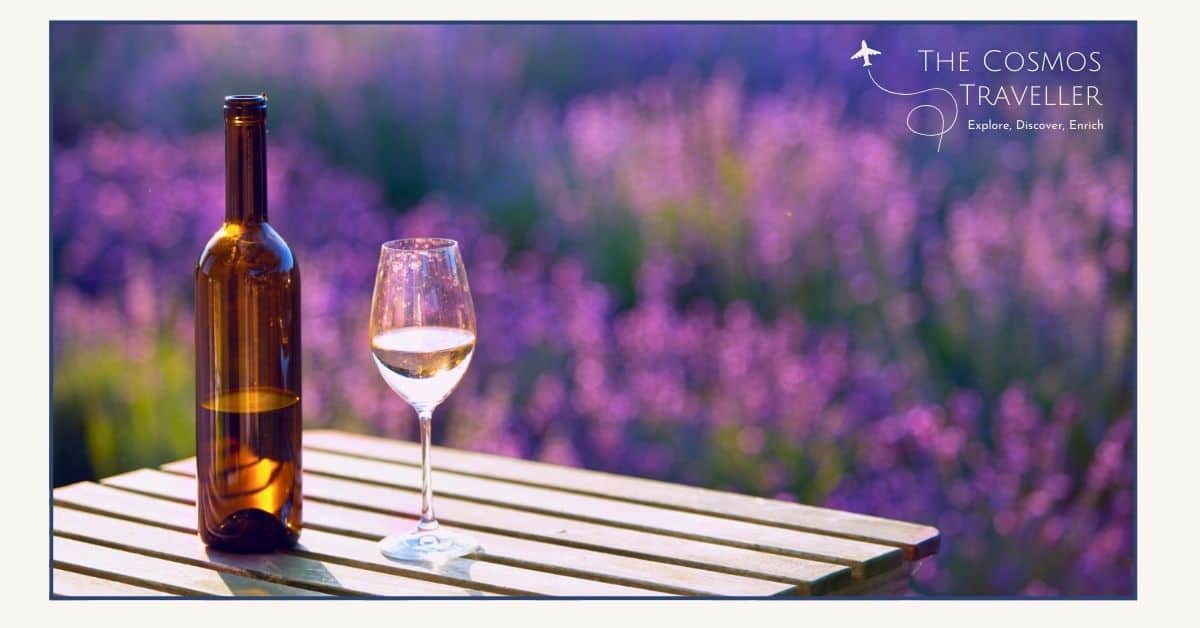Where to Go for the Best Provence Rosé Wine Tours
By Richard Hoskisson – May 2025

Provence sits in the southeast of France, stretching from Marseille in the west to Nice in the east, with the Mediterranean Sea to the south and the foothills of the Alps rising to the north. It’s a region known for its sun-drenched landscapes, olive groves, hilltop villages — and, of course, its wine.
At the heart of this region lies the Var department — a largely rural, inland area between the sea and the mountains. While it might be less well-known than coastal hotspots like St Tropez or Aix-en-Provence, the Var is where most of Provence’s rosé wine is actually made.
It’s also where you’ll find many of the estates featured in this guide — from glamorous châteaux to hidden organic vineyards tucked among the hills and pine forests.
Why Provence is the Spiritual Home of Rosé Wine
Rosé may feel like a modern trend, but its roots in Provence go back over 2,600 years.
Around 600 BC, Greek settlers arrived in what’s now Marseille — then called Massalia. They brought vines and made pale wines using red grapes with minimal skin contact. In other words, the earliest form of rosé.
The Romans later expanded winemaking inland, and during the medieval period, monks preserved and refined the craft. Today, 90% of wine produced in Provence is rosé — making it not just popular, but foundational.
So why is Provence so perfectly suited to rosé?
It starts with the climate: over 300 sunny days a year, with nearly 2,900 hours of sunshine. The Mistral wind keeps the vines healthy and the skies clear. And the soil — limestone in the west, schist in the east — is rocky and low in nutrients, which forces vines to dig deep and produce concentrated, flavourful grapes.
It’s this combination of sun, wind, and soil that gives Provence rosé its signature freshness, minerality, and delicate pink colour.

Where to Taste the Best Provence Rosé Wines
From glamorous châteaux to hidden organic gems, these are my top recommendations for rosé tasting in the Var — the sun-soaked centre of Côtes de Provence wine country.
While the Côtes de Provence appellation spans a wide area, the Var department is where most of the magic happens. This region is home to some of the best rosé in Provence, made by passionate winemakers around towns like St Tropez, Vidauban, La Garde-Freinet, Le Muy, and La Motte.
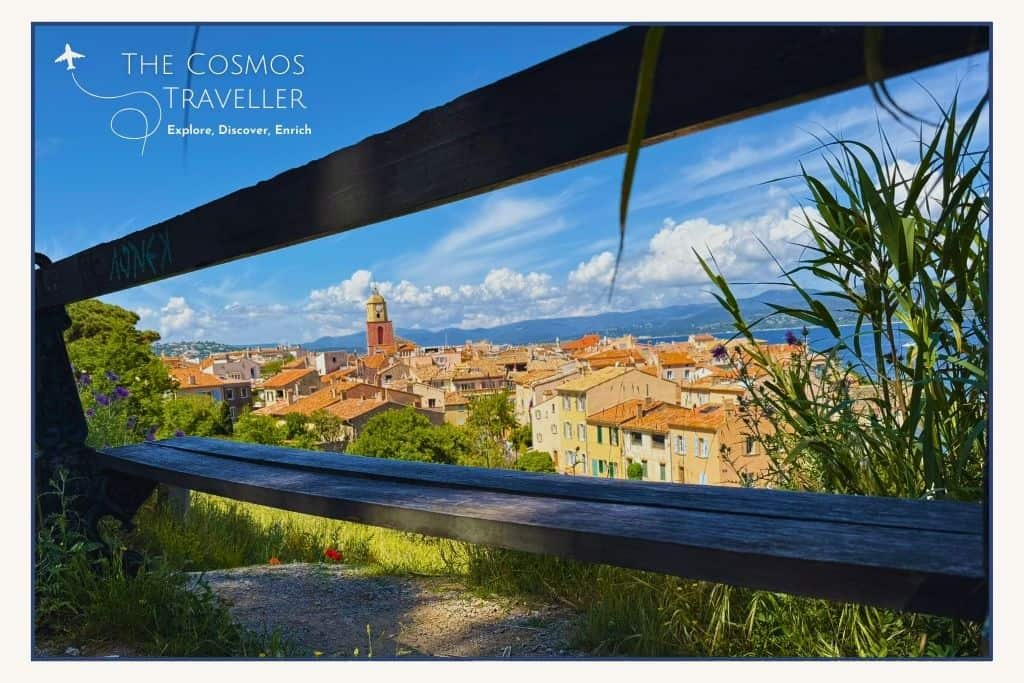
Here, you’ll find everything from world-famous estates to family-run vineyards you’d never stumble on without local insight. Each one offers a unique experience — whether it’s sipping under ancient trees, watching the sun set behind a château, or discovering small-batch wines you won’t find anywhere else.
Read on to explore the estates I recommend most for a truly unforgettable Provence rosé wine tour.
7 Rosé Wine Estates Worth Visiting
I’ve done the hard work (and the tasting) for you — narrowing down a list of seven standout estates that I believe should be at the top of your list when planning a Provence rosé wine tour. Each offers something unique, whether it’s world-renowned cuvées, peaceful picnic spots, or a beautifully personal tasting experience.
1. Château d’Esclans – Home of Whispering Angel
Arguably the most internationally recognised rosé estate in Provence, Château d’Esclans is nestled in the Var countryside near La Motte. It’s best known for launching Whispering Angel — a wine so popular it’s become a global symbol of pale pink elegance. But there’s more to this estate than the headline act.

Why visit:
- Beautiful château surrounded by old trees and quiet vineyards
- Globally exported wines, easy to find in the US and UK
- Friendly tastings with a range of styles to explore
What to taste:
- Whispering Angel — light, fresh, accessible
- The Pale & The Beach — fun, easy-drinking rosés for warm afternoons
- Les Clans & Garrus — complex, oak-aged rosés with serious structure
“Whispering Angel may be the star, but try the Garrus if you want to see what rosé can truly become.”
2. Château Minuty – St Tropez Elegance
Just outside St Tropez, Château Minuty is known for its refined, mineral-driven rosés and spectacular hillside setting. It’s family-run, elegant, and very easy to visit — ideal to pair with a morning in Port Grimaud or lunch on the coast.

Why visit
- Close to St Tropez but far more peaceful
- Long-established family estate with Riviera heritage
- Sleek, modern tasting room with vineyard views
What to taste
- Rosé et Or — floral, fresh, and beautifully balanced
- Minuty Prestige — dry, classic, perfect for lunch
- Minuty 281 — a structured, high-end rosé with real finesse
“Try the Rosé et Or for a refreshing, floral, and utterly classic Provençal experience.”
3. Domaines Ott – Rosé Royalty with Three Distinct Estates
Domaines Ott is one of the grand old names of Provençal rosé wine, known for producing some of the region’s most structured and age-worthy cuvées. The house operates across three different estates, each with its own unique terroir:
- Clos Mireille – coastal, saline, elegant
- Château de Selle – inland, balanced, floral
- Château Romassan – near Bandol, fuller and more textured
Their flagship wine, Étoile, blends fruit from all three to stunning effect.
Why visit
- Taste across multiple terroirs under one prestigious name
- Elegant, serious rosés with a reputation for ageing
- One of the first producers to elevate rosé to “fine wine” status
What to taste
- Étoile — refined, structured, and impressively age-worthy
- By.Ott — approachable, fresh, and easy-drinking
- Clos Mireille Rosé — pale, mineral, with coastal character
“Ott’s Étoile rosé blends all three estates — it’s what Provençal rosé dreams are made of.”
4. Ultimate Provence (UP) – Chic Design Meets Rosé Culture
A total contrast to tradition, Ultimate Provence (UP) is a sleek, ultra-modern wine estate with bold architecture, a boutique hotel, and one of the most beautifully designed tasting rooms in the region. Located near Le Garde-Freinet, it’s a stylish stop just inland from the coast.
The wines are modern, fruity, and very approachable — and the entire experience feels curated for a new generation of rosé lovers.

Why visit
- Design-forward tasting room with serious wow factor
- Boutique hotel and bistro on site
- Great detour if you’re exploring the Maures hills or heading inland
What to taste
- Ultimate Provence Rosé — fresh, juicy, made for warm afternoons
- UP Cuvée Collection — slightly fuller-bodied, sleek packaging
- Also worth trying: their white wine (surprisingly crisp)
“It’s where rosé meets design — the wine is as fashionable as the setting.”
5. Château Barbeyrolles – Organic, Intimate, and Iconic
A total shift in pace, Château Barbeyrolles is a small, peaceful estate tucked just outside St Tropez. It’s the home of Pétale de Rosé, a cult classic known for its softness and pale hue. The estate has long been a pioneer in organic and natural winemaking, and the result is a rosé that feels like it belongs exactly where it’s made.
Why visit
- A quiet, charming contrast to the glitz of St Tropez
- One of the first organic rosé producers in the region
- A true sense of place — peaceful, personal, and full of charm
What to taste
- Pétale de Rosé — delicate, floral, and iconic
- Other small-production cuvées, if available
- A perfect option for anyone seeking elegance and authenticity
“This is where rosé becomes poetry — soft, pale, and beautifully expressive.”
6. Château d’Astros – A Fairytale Setting in the Forest
Château d’Astros feels like something out of a storybook — a medieval château nestled among pine forests, with long tree-lined paths and a deep sense of peace. The estate is certified organic and quietly committed to sustainability, but what makes it stand out even more is its cinematic connection.
It’s been used as a filming location for the 1990 classic Le Château de ma Mère, based on Marcel Pagnol’s memoir, and more recently for the French romantic comedy Jour J.
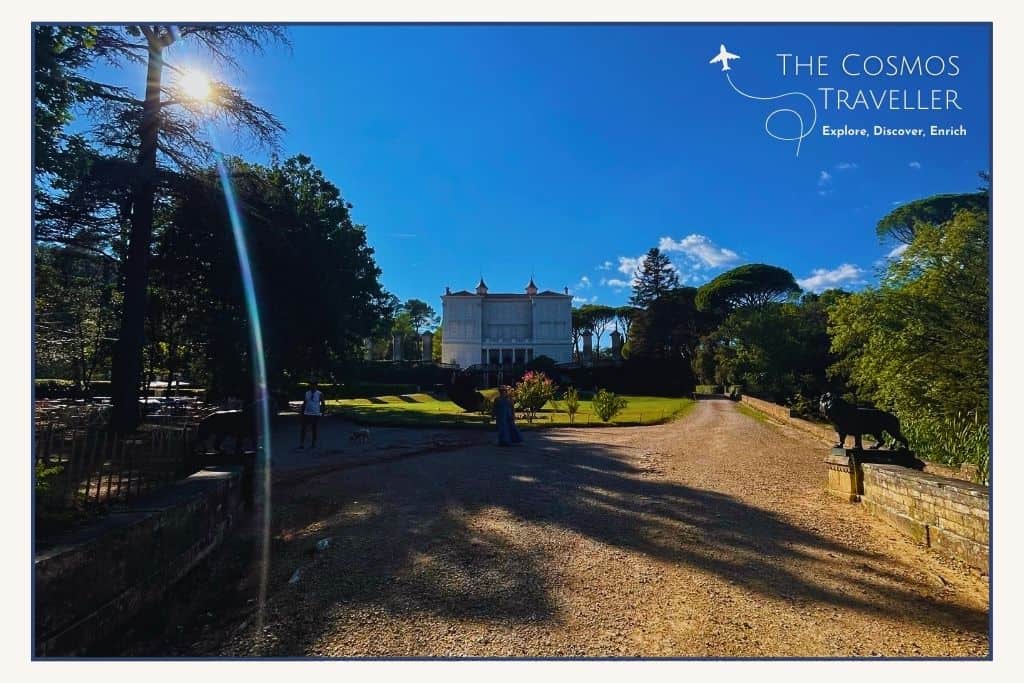
Why visit
- Peaceful, romantic setting surrounded by pine and vineyards
- Organic wines made with care and character
- Film-worthy scenery and a relaxed, rustic charm
What to taste
- Château d’Astros Rosé — fresh, floral, with wild berry notes
- Small-production cuvées depending on the season
- Ideal wines to enjoy outside, with a picnic
“Bring a picnic. Sip under the pines. It’s everything you picture when you dream of Provence.”
7. Château Sainte Roseline – Where Wine Meets History
And finally, Château Sainte Roseline — where wine, art, and sacred history come together in a uniquely Provençal way. This Cru Classé estate produces excellent wines, but the real highlight is the 11th-century chapel on site, which holds the relics of Saint Roseline and features rotating exhibitions of contemporary art.
The estate beautifully blends the old and new, with sustainability at the heart of its winemaking philosophy.

Why visit
- One of the rare Cru Classé estates in Provence
- Explore a historic chapel alongside your tasting
- Art, heritage, and wine in a peaceful setting
What to taste
- Château Sainte Roseline Rosé — elegant, dry, with subtle spice
- Look for their limited cuvées in red and white too
- A good choice for those who enjoy depth with a cultural twist
“A rosé tasting in the shadow of a saint — where spirituality meets sustainability.”
2 Hidden Rosé Wine Estate Gems in the Var
While the estates above are well-known for good reason, there are a few places that deserve a quieter kind of praise. These hidden gems may not have the global spotlight, but they offer beautiful wines, warm welcomes, and a true sense of place. If you have time to venture a little off the main wine trail, these are well worth the detour.
1. Château de Pampelonne – A Rosé Retreat by the Beach
Tucked just behind Pampelonne Beach in Ramatuelle, Château de Pampelonne is wonderfully understated. The setting is calm, green, and unspoiled — a world away from the beach clubs nearby. Tastings are simple but full of charm, and Isabelle, the welcoming hostess, makes the experience feel personal.
Why visit
- Steps from the sand — perfect for a post-swim tasting
- Quiet, down-to-earth vibe
- A local favourite with a loyal following
What to taste
- Château de Pampelonne Rosé — soft, pale, and gently expressive
- Also available by the glass in some local beach restaurants
- Great takeaway bottle to enjoy back at your accommodation
“A lovely way to end a beach day — soft, pale, and completely relaxing.”
2. Château Margüi – The Home of Skywalker Wines
This estate gets a special mention — even though it doesn’t technically produce Côtes de Provence wines. Château Margüi is part of the Côtes Varois en Provence AOP, a smaller appellation entirely within the Var, known for its more inland vineyards and cooler, higher-altitude conditions.
Because of that elevation, the rosés here tend to be a little fuller-bodied, with more structure and sometimes a touch of red fruit.
I stumbled across this estate by accident, but it’s stuck with me — not just for the setting, but because it’s now owned by George Lucas, and part of his Skywalker Vineyards group.

Why visit
- A beautiful, quiet location in the hills of Châteauvert
- Cooler-climate wines with more texture and character
- An American connection with a cinematic twist
What to taste
- Skywalker Rosé — a structured, elegant rosé with personality
- Their whites and reds are also excellent
- Perfect for those who want to explore beyond the coastline
“The setting feels like a movie — because it is. Try the Skywalker rosé while soaking up the silence.”
Pair Your Wine Tour with These Provençal Towns
There’s no shortage of beautiful cities, towns, and hilltop villages to explore in Provence. If you’re in the Var and following some of the rosé wine tours I’ve recommended, pairing a tasting with a visit to one of these nearby towns will help you build the perfect day out — scenic, cultural, and always full of flavour.
St Tropez – Seafood and rosé by the harbour
Famous for its glitz, but still full of Provençal charm, St Tropez is an ideal pairing with a nearby rosé tasting at estates like Minuty or Barbeyrolles. Whether you’re wandering through the old town or watching the yachts over a glass of wine, it’s a classic stop along the Var coast.
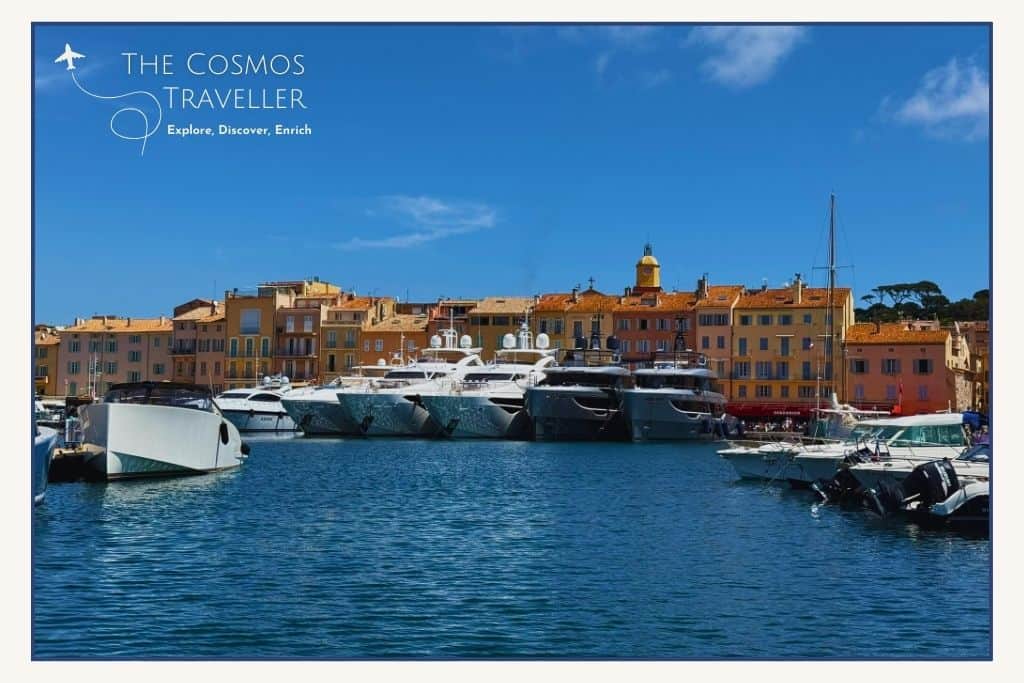
What to see:
- The Old Port and its colourful fishing boats
- The Citadel and maritime museum with panoramic views
- The bell tower of the Église Notre-Dame-de-l’Assomption
- Local boutiques, art galleries, and morning markets
Where to eat:
- 💶 Budget: Le Bagatelle – casual Provençal fare near Place des Lices
- 💎 High-end: Le Girelier – harbourfront seafood with style and views
👉 Want a full itinerary? Read my 2025 St Tropez guide here
Sainte Maxime – Laid-Back Coastal Charm
Just across the bay from St Tropez, Sainte Maxime offers a more relaxed, family-friendly atmosphere — with ferries running regularly between the two towns. It’s a great place to unwind after a wine tasting at estates like Minuty or Barbeyrolles, and the seafront promenade makes for a lovely afternoon stroll.
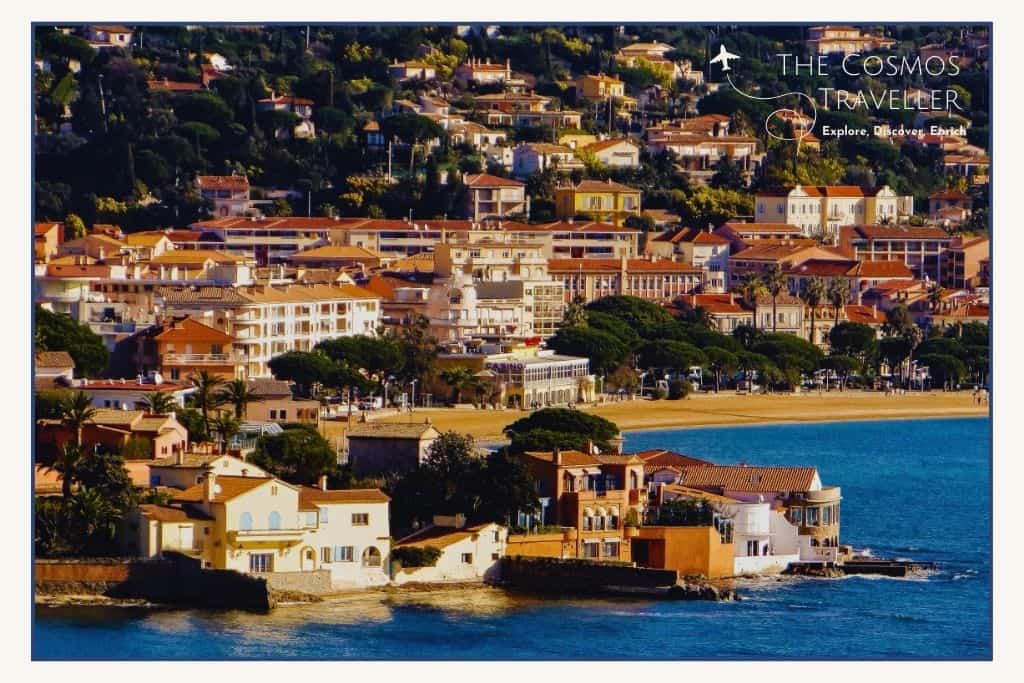
What to see:
- The Old Town with its shaded squares and weekly market
- The promenade and beach for swimming or sunset views
- The Tour Carrée (square tower) with small exhibitions
- Seasonal ferry ride across the bay to or from St Tropez
Where to eat:
- 💶 Budget: La Maison Bleue – friendly local spot with good daily menus
- 💎 High-end: Les Planches – modern Mediterranean cuisine right on the seafront
Le Garde-Freinet – Forested Hills and Designer Wines
Set in the hills above the Gulf of St Tropez, Le Garde-Freinet is a peaceful, forested village that feels a world away from the coast — yet it’s just a short drive inland from estates like Ultimate Provence (UP). With cobbled streets, local markets, and sweeping views, it’s perfect for a slow morning before or after a tasting.
What to see:
- The Fort Freinet hike for panoramic views across the Maures
- Local art galleries and artisan workshops
- Weekly markets with Provençal produce and flowers
- Chestnut festivals and seasonal events in autumn
Where to eat:
- 💶 Budget: La Feuille – simple, hearty local dishes
- 💎 High-end: Le Carnotzet – cosy, upscale dining with Alpine-Provençal fusion
Brignoles – Market Town and Gateway to the Hills
Located in the heart of the Var, Brignoles is a traditional Provençal market town that makes a great stop en route to Château Margüi. It’s not flashy, but it’s authentic — with medieval streets, shaded squares, and a strong local food culture.
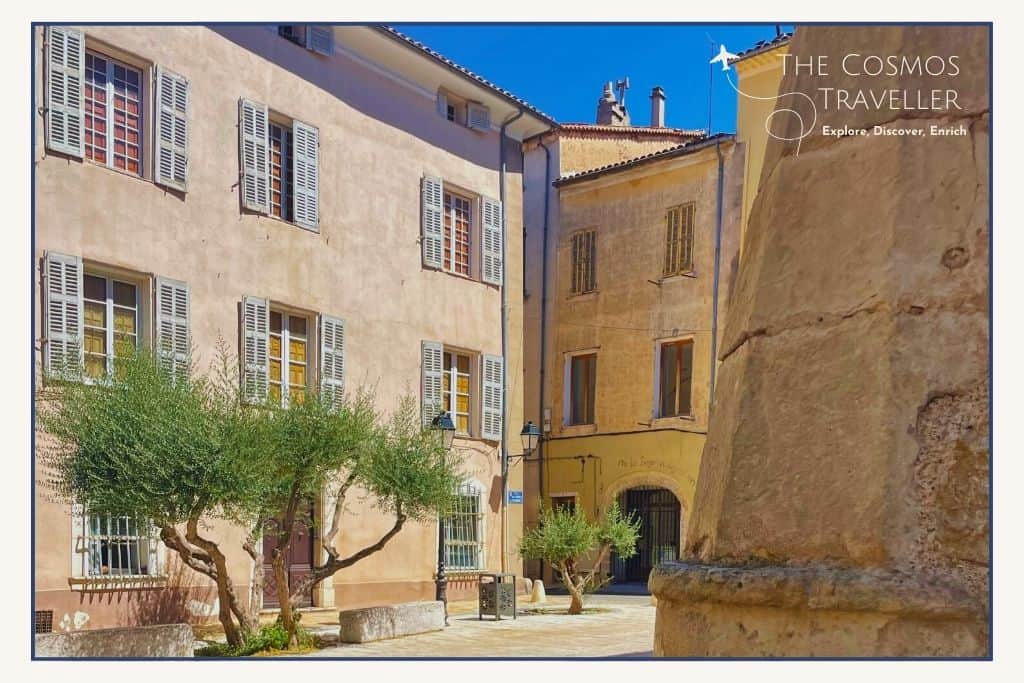
What to see:
- The historic centre with old stone houses and quiet charm
- Provençal market days (Wednesdays & Saturdays) for fresh produce and local cheeses
- The Palais des Comtes de Provence – a small museum and heritage site
- Local wine shops and bakeries with friendly, low-key atmosphere
Where to eat:
- 💶 Budget: Le P’tit Creux – casual and friendly with daily plats du jour
- 💎 High-end: Hostellerie de l’Abbaye de la Celle – a Michelin-starred spot in a nearby village, ideal for a special occasion lunch
Aix-en-Provence – Fountains, Culture, and Rosé in the Shade
Elegant and artistic, Aix-en-Provence is a Provençal favourite known for its tree-lined boulevards, fountains, and café culture. Though slightly outside the Var, it’s an easy addition to your itinerary — especially if you’re heading east from Marseille or flying in.
While this guide focuses on the Var, there are countless rosé-producing estates in and around Aix too — including the popular Maison Saint Aix, known for its bold and structured rosés.
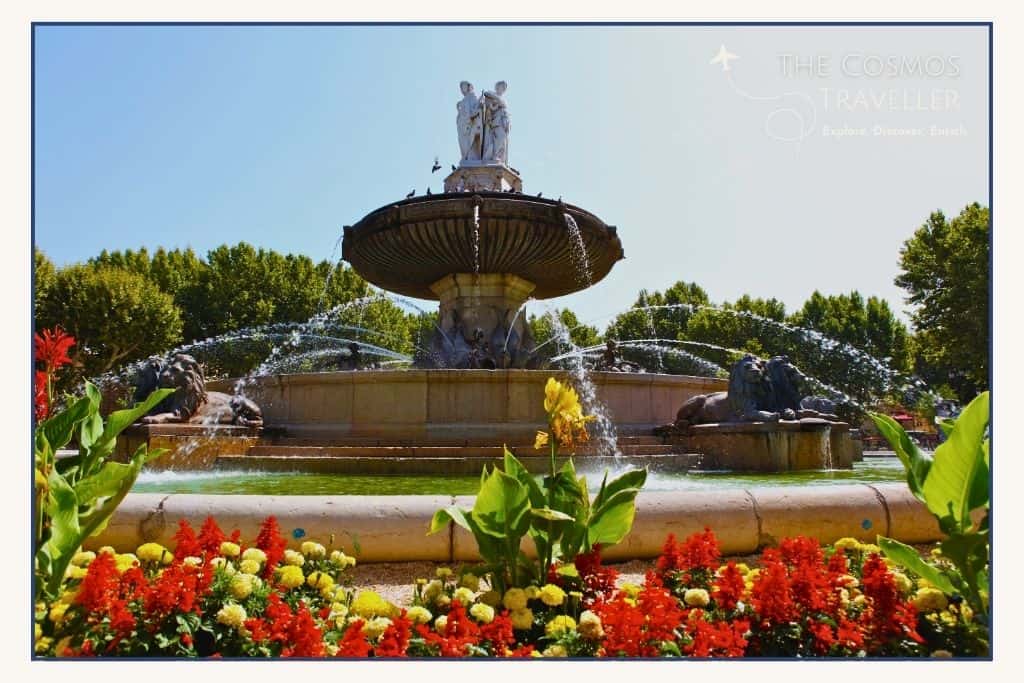
What to see:
- The Cours Mirabeau for cafés, markets, and people-watching
- The old town and daily flower markets
- Atelier Cézanne, the former studio of the famed painter
- Dozens of elegant squares with fountains and shaded terraces
Where to eat:
- 💶 Budget: Chez Féraud – casual Provençal plates with a great wine list
- 💎 High-end: Le Saint Estève – refined cuisine with panoramic views just outside town
Pair an afternoon in Aix with rosé under the plane trees — and you’ll see why so many fall in love with this city.
Planning Your Provence Rosé Wine Tour
Provence is beautiful year-round, but some seasons are better than others for rosé tasting — especially if you’re hoping to avoid the crowds or catch the vineyards at their most picturesque.
🌸 Spring (April–June)
Arguably the best time to visit. The vines are coming back to life, the weather is warm but not too hot, and the crowds haven’t yet descended on the coast. Perfect for relaxed tastings, scenic drives, and picnics in the sun.
🌻 Summer (July–August)
The rosé is flowing, the beaches are packed, and the temperatures can soar. It’s peak season for a reason, but if you go in midsummer, book accommodation well in advance — and expect busier tasting rooms, especially near St Tropez.
🍁 Early Autumn (September–early October)
A fantastic time to visit. Harvest is underway, the light is golden, and the pace slows down again. Some estates may be closed for harvesting days, but those open offer an incredible glimpse into the winemaking process.
Getting There
The Var is well connected — but still quite rural. That means getting there is easy, but getting around is best done by car.
Your options:
- ✈️ Fly into Nice or Marseille – both major airports with international connections
- 🚄 TGV from Paris to Aix-en-Provence, Marseille, or Toulon – fast, scenic, and relaxing
- 🚗 Car hire is essential – for vineyard hopping, coastal drives, and reaching lesser-known estates
(I recommend booking in advance — AutoEurope is the car hire search engine that I always use to find the best deals.) ← insert affiliate link
Plan Your Trip With
My Favourite Resources
– Best Accommodation – Booking.com
– Best Tours & Experiences – Viator.com
– Best Travel Insurance – EktaTravelling.com
– Best Car Hire – AutoEurope.com
Booking Tastings: What to Know in Advance
One of the joys of Provence rosé wine tours is how informal and welcoming many estates are.
- Most places welcome walk-in visitors, especially during spring and summer
- Tastings are often free, especially if you buy a bottle or two
- If you’re travelling in a group or want a full tour, it’s worth booking in advance by email
- Don’t be surprised if you’re tasting wine with the winemaker themselves — many estates are family-run
Tip: Some wineries have limited hours or close at midday — always check opening times before heading out.

What to Expect from a Provence Rosé Tasting
Everyone has their own way of enjoying rosé, but I thought I’d finish by sharing a few of my favourites — from the flavours to look for, to the moments that make a glass truly memorable.
Typical Wine Profiles: Colour, Aroma, Flavour
Provence rosés are known for their pale pink colour, often described as onion skin or salmon-hued — a visual signature that hints at their elegance.
Aromas and flavours to expect:
- Floral notes: rose petal, white blossom
- Citrus zest: grapefruit, lemon peel
- Red fruits: strawberry, raspberry, cherry
- Hints of peach, melon, and sometimes herbs or saline minerality
They’re usually dry, crisp, and light-bodied, with just enough structure to stand up to food — or to enjoy entirely on their own.
Food Pairings to Try
When it comes to food, I tend to keep things simple — and Provence rosé pairs effortlessly with the local cuisine.
My favourites:
- Grilled sea bass with olive oil and lemon
- A classic salade Niçoise
- Fresh goat cheese with herbs on crusty bread
- Light Provençal vegetable dishes or seafood pasta
These wines are made to refresh, not overpower — and they shine with anything fresh, seasonal, and sun-soaked.
Wine Etiquette: Serving Temps and Storing Rosé
Just a few practical tips before we wrap up:
- Serve rosé well chilled, ideally between 8–10°C (46–50°F)
- These wines are made to be enjoyed young — usually within 1–2 years of release
- Don’t overthink it — rosé is best on a terrace, by the pool, or simply watching the world go by
“I like to think of it as not just a wine — but a reminder to slow down and savour the flavour of Provence.”
And if I had to pick a favourite rosé moment? It would be a sunset picnic at Château d’Astros, under the pine trees. Quiet, green, and just that little bit magical.

Plan Your Route: Free Provence Rosé Trail Guide
Planning your own Provence rosé wine tour? I’ve created a free downloadable guide to help you get started — with a curated itinerary through some of the best rosé estates in the Var.
Inside the PDF, you’ll find:
- A quick-reference guide to 7 standout vineyards
- Maps to help you plan your route
- Local tips, wine recommendations, and scenic stops
Whether you’re already booking your trip or just dreaming for now, this guide is the perfect companion for sipping your way through Provence.
👇 Get your free guide here:
Final Thoughts: Why a Rosé Wine Tour Belongs on Your Provence Itinerary
There’s something truly special about rosé in Provence — it’s not just the taste, but the setting, the people, the pace of it all.
From historic châteaux and coastal vineyards to pine-scented picnics and shaded village squares, a rosé wine tour is the perfect way to experience the culture, scenery, and flavour of the region.

If I had to choose one moment that captures it all? It would be a sunset at Château d’Astros, glass in hand, under the trees — the sky turning pink to match the wine. Quiet, timeless, and pure Provence.
If this guide has inspired you, I’d love for you to share it with a fellow wine lover — or save it for your own Provence planning.
👇🏼 Save & Share this post
